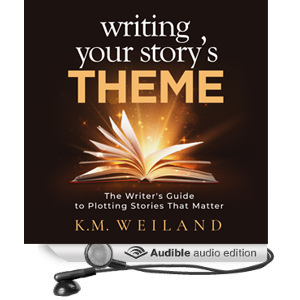K.M. Weiland's Blog, page 22
November 8, 2021
The Two Halves of the Inciting Event
 Stories are made of scenes. By one of their simplest definitions, scenes are transitions. They signify a change of some sort—an arc. They start in one place (whether a physical place or an abstract “place”), and they end in another. This is how we determine whether something happens in a scene and whether it “moves the plot.” Therefore, by definition, we can see how scenes may be viewed as essentially a whole of two halves.
Stories are made of scenes. By one of their simplest definitions, scenes are transitions. They signify a change of some sort—an arc. They start in one place (whether a physical place or an abstract “place”), and they end in another. This is how we determine whether something happens in a scene and whether it “moves the plot.” Therefore, by definition, we can see how scenes may be viewed as essentially a whole of two halves.
This is nowhere more important or true than of major structural moments. The major turning points of the plot are the scenes that must dynamically change the conditions of the story and the characters in it. If these structural scenes fail to change or move the plot, then the entire story’s structure weakens and, eventually, crumbles.
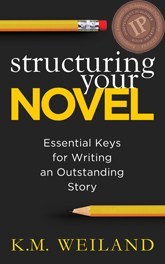
Structuring Your Novel (Amazon affiliate link)
Today, I want to start a short unofficial series that examines the two “halves” implicit in the following major structural beats:
Inciting EventFirst Plot PointMidpoint (or Second Plot Point)Third Plot PointClimactic Moment(The two Pinch Points are interesting in that I don’t see them as offering the same intrinsic halves or “doorway” of the other major structural beats. Rather, they can be seen to function more as each other’s halves—with the First Pinch Point in the first half of the story foreshadowing the payoff of the Second Pinch Point in the second half of the story.)
This series was inspired by the following reader question, which I received in an email from Wordplayer John White last year after my series on the inherent chiastic links between the structural beats in the first half of the story and the beats in the second half:
If the Key Event and First Plot Point are the two sides to Plot Point 1, are the Dark Night of the Soul and Third Plot Point also two sides to that door? It seems like it.
The most important thing to understand about the specific halves that make up the major structural beats is that they mimic the structure of any good scene by presenting an arc. This arc can be viewed through any number of structural theories, but perhaps the most useful for this discussion is simply that of acknowledging that a scene will begin with one emotional value (e.g., hope) and end in another (e.g., despair).
Together, this is what the two halves of the structural beats naturally create. We see this clearly in the Inciting Event, which we will be examining today. Classically, the Inciting Event begins with the Call to Adventure (which is usually viewed as having a “positive” or forward-moving value, which can be equated with the scene’s structural “goal”) and swings into the Refusal of the Call (which can be seen to have a “negative” value equated with the scene’s structural “disaster”).
Although not always as obvious as the Inciting Event, all of the major structural beats can be broken down into similarly helpful guides for creating structural solid scene arcs in these most important of all beats. We will discuss the others in future posts.
What Is the Inciting Event?The Inciting Event is the first major structural moment in a story. It occurs not at the very beginning of the story as is sometimes (confusingly) thought. Rather, it is the major turning point in the middle of the First Act, taking place approximately 12% of the way into the story.
As already noted, the Inciting Event initiates the plot by directly inviting the protagonist’s involvement in some way.
A common question writers have about the Inciting Event is whether it can happen without the protagonist’s knowledge. The short answer is “no.” While the external plot events that will eventually impact the protagonist are likely already in play, the structural plot does not begin until the protagonist is impacted.
The Inciting Event can be a big or small event. However, it is distinct from the subsequent First Plot Point in that it is does not yet irretrievably involve the protagonist in the conflict. The Inciting Event is something that can be walked away from if the protagonist so chooses. However, the First Plot Point, when it comes later around the 25% mark, is a “Doorway of No Return.”
For reference, here is a quick overview of all the major structural beats and their recommended timing:
The First Act (1%–25%)
The Hook – 1%
The Inciting Event – 12%
The First Plot Point – 25%
The Second Act (25%–75%)
The First Pinch Point – 37%
The Midpoint (Second Plot Point) – 50%
The Second Pinch Point – 62%
The Third Plot Point – 75%
The Third Act (75%–100%)
The Climax – 88%
The Resolution – 99%
This series will be discussing the intrinsic structural halves of the italicized beats.
Recognizing the Arc Created by the Two Halves of the Inciting EventWe often talk about the major structural beats as the “major turning points.” These structural beats are where things happen. Of course, things are always happening in a story (or should be); every scene should advance the plot. But the major structural beats are where things get real for the characters.
The Inciting Event, halfway through the First Act at the 12% mark, is the first of these major turning points. Prior to this, the character’s Normal World will already have been established, along with the foundational problems and mindsets that create the need for something to change, either in the protagonist or in the supporting world.
Either directly by the protagonist’s own doing or as the result of external influences, these circumstances reach a crossroads. The protagonist is given at least something of a choice. Which road to take? Will the character advance according to the options life is providing—or try to remain passive and unchanging?
Either way, the character must confront the first half of the Inciting Event—the Call to Adventure.
The Call to Adventure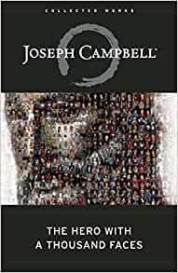
The Hero With a Thousand Faces Joseph Campbell (affiliate link)
This phrase is explicitly a reference to the Hero’s Journey, as codified by Joseph Campbell in The Hero With a Thousand Faces. As we’ve discussed recently in the series on archetypal character arcs, there are many different types of journeys, not all of them as explicitly “adventurous” as the Hero Arc. What is important in this beat is not so much that the protagonist is called to an adventure or a quest, but that he or she is called to something (e.g., an initiation, a battle, a pilgrimage, etc.).
Regardless the type of story, I still like the well-used term of “Call to Adventure” to evoke this important aspect of the Inciting Event. In many ways, the entire first half of the story is the something that happens to the protagonist, but it is not something to which the protagonist is in any way passive. One way or another, what is being offered in the Call to Adventure is a choice. The protagonist must choose whether or not to accept the challenge and answer the Call.
The Call to Adventure can arrive in many ways. It could be something positive—an opportunity the protagonist was hoping for, such as a new job or a college application acceptance. Often, in a romance, the Inciting Event is where the two love interests meet for the first time. In this instance, the “Call” isn’t likely to be an explicit challenge (“Go forth and date this person!)—although of course it can be—but rather simply the dawning of an opportunity. An interesting and attractive person enters the protagonist’s life. Even if the two don’t immediately like each other, there are sparks. Something has changed—in the scene, in the story, and in the protagonist.
In truth, people encounter potential Calls to Adventure all the time in real life. You very likely walked past one in the last five minutes! The reason we choose to tell stories only about certain Calls is that they are:
a) dramatic and potentially life-changing (versus the Call to go to Chipotle for lunch)
b) accepted by the protagonist.
After all, if the protagonist doesn’t accept the Call, there can be no Adventure.
But that acceptance can’t happen right away—not fully anyway. That’s too easy for everyone—you, the readers, and certainly the character. An immediate acceptance is also likely to be boring. If accepting the Call is as easy as that, then you’re probably looking at an Inciting Event that really isn’t going to change the protagonist’s life that much (Chipotle, anyone?).
The major structural beats are major for the very reason that they demand hard decisions from characters. The plot changes that occur here are hard-won, dramatic, and often difficult in some way.
And that is why any semi-smart protagonist needs to first experience some version of the Inciting Event’s second half: the Refusal of the Call.
The Refusal of the CallThe Refusal represents the importance found in all the second halves of the major structural beats. Put simply: it completes the scene arc by reversing the emotional and/or value polarity.
Your protagonist’s thought process might go like this: A Call to Adventure sounds great! Where do we sign up? But, whoa, wait a minute, I though we were talking about a fun trip to meet exotic new friends and maybe fall in love along the way. Nobody said anything about having to battle orcs and evil wizards to get to a horrible volcano in the worst place in the world. On second thought, I refuse.
For reasons both emotional and logical, it is important that the Call not be immediately accepted. After all, any good scene needs conflict. If there are no obstacles to the character accepting the Call, then the plot itself isn’t likely to be very interesting. And so the Call (which we all want the protagonist to accept) must be met with legitimate resistance.
Usually, this resistance/Refusal will originate with the protagonist. He or she will have to be convinced to accept the Call. Probably not until the irrevocable events of the First Plot Point (be they positive or negative) will the protagonist realize the Call must be accepted.
However, it is totally possible for the Refusal to be represented by a character other than the protagonist. In some stories, it makes the most sense for the protagonist to be an immediate “yes” to the Call. Perhaps the protagonist even initiated the Call (e.g., applied for a new job). In this case, the pacing and emotional flow of the story still requires some sort of Refusal to cap off the Inciting Event’s arc and provide the necessary conflict for the remainder of the First Act prior to the First Plot Point.
If your protagonist is not going to be the one to initially reject the Call to Adventure, then the Refusal can be offered by a supporting character. This could be someone who adamantly does not want the protagonist to go on the Adventure, or it could merely be someone who acts as the “voice of reason” in telling the protagonist all the reasons the Adventure is a bad idea.
Depending on the plot setup, it is possible this resisting character could be the antagonist or a representative of the antagonistic force—who, for obvious reasons, doesn’t want the protagonist getting in the way. But because the conflict between protagonist and antagonist hasn’t fully kicked off (that happens with the First Plot Point and its doorway into the Adventure World of the Second Act), the antagonist will probably not directly oppose the protagonist. For example, if the antagonist will later on use violence to try to stop the protagonist, for now the antagonist might only try to persuade the protagonist not to move forward.
It’s also unlikely that the antagonist will fully voice opposition to the protagonist at this point. The full “antagonism” won’t be revealed until later, after the protagonist has already irrevocably stepped through the Door of No Return into the conflict of the Second Act.
The Refusal of the Call is just as important as the Call itself because it sets up the second half of the First Act. Without the Refusal, there would be little reason not to immediately skip ahead to the First Plot Point, in which the protagonist’s acceptance of the Call becomes a reality and requires action.
Indeed, some writers might ask, Why not just skip to the First Plot Point anyway, then? Why do we need the Inciting Event at all? The answer is primarily one of realism and pacing. Stories should unfold in a realistic manner—in which great risks are not undertaken without appropriate caution and preparation.
Even if the First Plot Point presents an event that seems entirely out of the protagonist’s control or choice (e.g., getting sent to a prison camp), the Call provides the set up for the character’s personal challenges, choices, and journeys.
Although the Inciting Event is absolutely intrinsic to creating the external conflict, it is in many ways an interior beat in which the protagonist’s personal motivations, stakes, and arc will be set up. As such, it needs time to be properly set up. In many ways the entire First Act is about setting up the Inciting Event—and then building upon it to reach the First Plot Point.
***
Stay Tuned: Next week, we will take a look at the two halves of the “Doorway of No Return”: the Key Event and the First Plot Point.
Wordplayers, tell me your opinions! Can you identify both halves of the Inciting Event in your story? Tell me in the comments!Click the “Play” button to Listen to Audio Version (or subscribe to the Helping Writers Become Authors podcast in Apple Podcast or Amazon Music).
___
Love Helping Writers Become Authors? You can now become a patron. (Huge thanks to those of you who are already part of my Patreon family!)The post The Two Halves of the Inciting Event appeared first on Helping Writers Become Authors.
November 1, 2021
Humanizing the Bad Guy (or, Some Thoughts on Violence in Fiction)
 Our sense of story is almost like an extrasensory organ. It enables us to pick up on subtle signals in tone and intent and this allows us to interpret how we should respond when we encounter violence in fiction. These signals are more important than the actual act we are reading about or viewing.
Our sense of story is almost like an extrasensory organ. It enables us to pick up on subtle signals in tone and intent and this allows us to interpret how we should respond when we encounter violence in fiction. These signals are more important than the actual act we are reading about or viewing.
This is why the same beat—someone shoots someone else—can produce varied responses. In Raiders of the Lost Ark, we laugh when Indy shoots the swordsman. But in Gandhi, when the Mahatma is assassinated, we cry.
Emotion does not come from content but from context.
In the Raiders scene, Indy doesn’t even blink: he shoots, turns around before the guy falls, and is back to the problem at hand of finding Marion. The dichotomy in the context, between expectation (tough opponent) and result (dismissiveness), produces the humor in the scene.
In Gandhi, the great old man is greeting well-wishers when the assailant suddenly produces a gun and shoots. What follows is literal minutes of grief: the funeral parade, faces of deep sorrow, the soundtrack solemn.
Our response to all of this is unconscious; we’ve read and heard and seen thousands of stories. We are able to delineate between what could be called “significant” and “insignificant” violence. The random swordsman, appearing out of nowhere, we realize is insignificant. This helps us laugh at his fate—he is unimportant, disposable. Contrast that with Gandhi, with whom we’ve just spent three hours. His death is significant.
The Benefits of Humanizing CharactersEvery bit of unnecessary violence on screen has the potential to lessen the impact of “significant” violence. There are but a mere handful of significant characters in any story which means most violence we might see would be insignificant. And insignificant violence can distance us from the story; it can make us in a sense sociopathic, in that we lack empathy for the violence we have seen. As such, it should be used cautiously, since audience identification with a character is the greatest strength the storyteller has.
In the climax to Star Wars, George Lucas makes us identify with the heretofore unknown Rebel pilots as he shows them trying and failing to blow up the Death Star and then mostly dying. The tone is that of ratcheting tension with low expectation of success. It’s designed to signal the impossible odds the protagonist Luke Skywalker faces but it is also hugely important as it humanizes the Rebel fighters; we feel the weight of their sacrifice.
However, it is not just good guys who need to be humanized, but bad guys as well. They need to be thicker than cardboard so they don’t collapse when confronted. And it doesn’t take much. For example, there’s a scene early in Star Wars in which we see Darth Vader get irritated by a fellow officer so he Force-chokes him. I submit to you: who among us cannot identify with that scene?
Probably the most important thing to realize is that, as goes the suffering, so goes the audience identification. Is Darth Vader ever depicted suffering in the original trilogy? Why yes—right after he turns on the Emperor and saves his son. Now a fully restored good guy, Darth can struggle to breathe as he gazes one last time on Luke and slowly succumbs to his wounds. In Joker, Arthur’s suffering humanizes him without making excuses for, say, the way he blithely murders.
Complicating the Narrative With SufferingWhen asked when civilization began, Margaret Mead pointed to a 15,000-year-old skeleton with a healed femur. For this large bone to have healed in such primitive times meant someone had to care for this person, temporarily useless to the tribe, for weeks or even months. For the tribe to do this and increase their hardships for little to no external reward speaks to the power of human connection.
To suffer is, of course, to be human. From identifying suffering in our friends to doing the same in our enemies is not an unbridgeable gulf. In Unforgiven, as he confronts his demise, Little Bill Daggett is given a full speech. “I don’t deserve this, to die like this. I was building a house.”
Now just before this speech, Daggett had attempted to shoot William Munny in the back, so Little Bill isn’t redeemed. But this line complicates what is otherwise a straightforward scene: his final moments cry out for a recognition of shared humanity, and when it fails, he curses, “I’ll see you in hell, William Munny.”
Munny agrees and sends Daggett on his way. In Unforgiven every character is a bad guy. The film is concerned with making peace with the darkness in our souls in the aftermath of violence, and it suggests what justice there is to be had will not come from this world.
The complication of narrative equals the humanization of the antagonist equals more realistic outcomes from violence. No Country For Old Men is not a simple tale. The film opens with Anton Chigurh, the implacable psychopathic force of nature who is revealed to be the main antagonist. And quick as a wink, Chigurh is viciously murdering a deputy and sustaining grievous wounds on his wrists. The pain on Chigurh’s face as he kills the deputy is plainly visible. In fact, Chigurh is shown suffering multiple times; his injuries demonstrate he is just as human as the protagonist Moss.
Complicating the narrative serves to humanize Chigurh and add shading to Moss, who is completely in the wrong but who nonetheless we root for to succeed in keeping his ill-gotten gains. It also serves to deepen the impact of the story. On a subconscious level at least, humanizing Chigurh forces us to consider his viewpoint, because he isn’t wrong when he asks, “If the rule that you followed has led you to this place [about to be murdered by a psychopath], of what use was the rule?” Humanizing him allows us to see that he is subject to the same inexorable logic; it is in following his own rule that he becomes seriously injured in a violent car crash.
The Bad Guy Is a Point of ViewIf every antagonist is the protagonist of their own story, then two things follow from that: every story features two “good” guys, diametrically opposed to each other—and your protagonist is the “bad” guy in this other story.
All of us have moments we aren’t proud of, times we didn’t do the right thing, times we were the bad guy. But we learned from our mistakes; we grew as people and did the right thing eventually. The constraints of story are such that we can’t follow the antagonists past the ending; we can’t see them learn and grow from their mistakes. But if we deny them the capacity for that humanity in our story, in a sense we are denying our own capacity to grow.
But the bad guys always gets theirs in the end, you may be thinking, and you’d of course be correct. The secret is to make audiences feel the tragedy in the loss: the passing of a human being, both beautiful and flawed, wrong in this story, wrong in this fateful choice, yet but for the lack of time, capable of growth, reflection and ultimately, in a different story, being the good guy.
Wordplayers, tell me your opinions! What considerations do you weigh in using violence in fiction and particularly in relation to your antagonists? Tell me in the comments!The post Humanizing the Bad Guy (or, Some Thoughts on Violence in Fiction) appeared first on Helping Writers Become Authors.
October 25, 2021
6 Questions to Help You Avoid Repetitive Scenes
 It takes a lot of scenes to make a novel. Not only do we need enough scenes to progress the plot and get the characters from Point A to Point B, we also need to reach a certain word count so the book can be a novel. (Or the movie can be a movie. Ya know.) So how can you make sure you’re not just filling out that word count with repetitive scenes?
It takes a lot of scenes to make a novel. Not only do we need enough scenes to progress the plot and get the characters from Point A to Point B, we also need to reach a certain word count so the book can be a novel. (Or the movie can be a movie. Ya know.) So how can you make sure you’re not just filling out that word count with repetitive scenes?
At a certain point, most writers will receive critiques or edits in which whole scenes are circled in red with notes that read “nothing happens” or “they already had this conversation” or “this doesn’t advance the plot” or “feels like you’re padding the word count”—all of which are code for “repetitive scenes.”
Recognizing repetitive scenes can be tricky for authors (hence, the big red circles from critique partners and editors). Our deep immersion in our own stories inevitably causes a certain lack of objectivity. We may think a scene is full of new info when really the characters have already been there done that. Readers may not think too much about one or two repetitive scenes. But at a certain point, they will grow increasingly restless and frustrated with the story’s lack of progress.
A while back, I received an email from Wordplayer Sarah K. with an insightful question:
I’m working on a novel that seems to be lending itself to a lot of “talky” scenes, scenes (in the scene structure sense) where the conflict is typically interpersonal and expressed in dialogue; think lots of parlor arguments, gossip while hunting, etc. I know that not every novel needs to have car chases and sword fighting, particularly in certain genres. But I can’t help but worry that this is a function of something going wrong. My concern is that these scenes are starting to feel repetitive and that this is a symptom of me “telling” the conflict, or even having protagonists that aren’t quite right (i.e., just aren’t witnessing really interesting things firsthand).
Is this something you’ve seen often in unpublished writers? Do you have any insights into varying scene conflict and ensuring that conflict is dramatized in an interesting way?
My response was that there’s nothing wrong with keeping the conflict mostly interpersonal and expressed in dialogue. Many novels operate this way (and, indeed, I’d argue this is often the most interesting type of conflict). But Sarah still raises an excellent point: how do you know whether the scenes you’re writing are simply leisurely and character-driven scenes or whether they are truly repetitious?
Today, I’m going to dive a little deeper into this subject and examine what defines repetitive scenes, as well as strategies for recognizing and avoiding them in your own fiction.
When Repetitive Scenes Are Okay—And When They’re NotAs per Sarah’s example, it’s inevitable that many scenes within a story will be similar to one another. For instance, in a cop story, there will be many scenes of investigating clues. In a romance, there will be many dates between the leads. In an action story, there will be many action scenes. And so on. Additionally, every scene in the entire story will ultimately have the same overarching goal—to find the murderer, resolve the relationship issues, defeat the bad guy, etc. In some respects, every scene is repetitive simply because every scene is a small piece in a larger (and hopefully) unified whole.
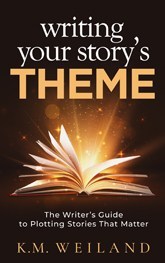
Writing Your Story’s Theme (Amazon affiliate link)
Particularly, it’s fine to include “repetition” in the form of thematic motifs or running gags. The latter is particularly obvious in serial works, such as TV shows. Many shows, especially comedies, will open with an isolated scene that stands apart from the main plot but which features a standard running gag of some sort. (The Andy Griffith Show and Gilmore Girls often opened their episodes with a scene in which the characters exchanged a funny conversation about a random topic.)
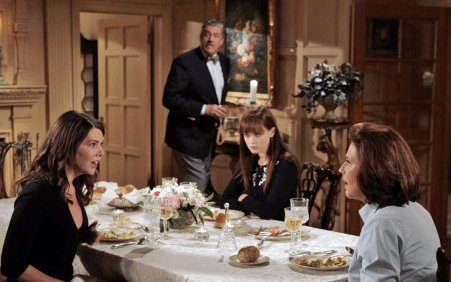
Thematic motifs also require repetition to become effective. For instance, one confrontation with authority does not a rebel make. But if your character has repeated run-ins with authority figures, then the entire story begins to take on a specific thematic shape. This is not only okay, it’s necessary to the formation of a cohesive and resonant story.
What is not okay is plot-oriented repetition.
6 Questions to Help You Prevent Repetitive ScenesWhat differentiates one repeat scene of a character shoplifting and getting arrested from another repeat scene featuring the same incident?
The simplest criterion is: does the scene change something?
This change might be to the character and the plot itself (e.g., the character is let off with a warning the first time but arrested the second). Or the change could simply be to the readers’ perspective (e.g., the character’s second arrest provides the punchline to a joke or adds new insight into the thematic context).
Of course sometimes what the author intends as thematic repetition will still come across as boring and unnecessary to readers. Fortunately, there are several questions you can ask yourself to analyze whether your scenes are truly advancing the story or whether they are repetitive—and should probably be cut.
1. Is the Character’s Goal the Same as in the Last Scene?Although not a catchall, this is the first and most important question you should ask yourself. As noted, the overarching plot goal will remain essentially the same throughout the story. But the smaller scene goals should still show a progression. If the character’s plot goal is to become President, then the smaller goals will arise in response to various obstacles along the campaign trail.
And what if your story is more relational with a less obvious plot goal? What if, like Sarah’s story, yours is primarily focused on lots of conversations between characters with a vaguer destination of something like “coming to peace with a complicated parent’s passing”? Ultimately, the same guideline applies. Examine how well the characters’ goals are evolving from scene to scene. Are they getting closer to what they want—or farther away? (Either will provide a sufficient movement of the plot circumstances.) If the talking isn’t achieving any movement for any of the characters then examine how you might adjust that from scene to scene.
2. Are the Obstacles the Character Is Facing Different From Previous Scenes?If you find your characters’ scene goals aren’t changing much from scene to scene, the next thing to look at is your scenes’ conflict. Specifically, how are the obstacles evolving? How can you avoid your characters facing the same scene-specific problems in every scene?
It could be that the character’s goal doesn’t change too much for multiple scenes, and that’s okay, as long as the obstacles are changing. If your protagonist is a detective trying to get a conversation with a mob boss, he might have to try several different tactics before he gets what he wants. But if he faces the same obstacle (or a familiar variation on the same obstacle) in every one of those scenes, the action will quickly feel repetitious.
Sometimes realism and pacing demand characters won’t get what they want on the first try. In these instances, you’ll need to evolve their goal subtly from scene to scene by focusing on how they systematically work through various obstacles on their way to the goal.
3. What New Information Is Introduced in This Scene?Even when you find yourself in a situation where you need to include several scenes featuring the same goal and perhaps even very similar obstacles, you can still prevent the scene from feeling repetitious. All you have to do is make sure every scene introduces new information.
This could be information that is new to the protagonist, but it could also simply be new insights for the readers. For instance, the protagonist might reveal a personal secret to another character. This might not directly advance the plot or immediately change the scene goal or conflict, but as long as it deepens the characterization context, it can serve to justify the scene’s existence.
This is a tricky one, since writers must be able to accurately judge whether the new information is truly adding something to the story. If the character’s secret is about how he broke his brother’s bike when they were kids, that secret must either become crucial to the development of the plot later on or offer significant insight into the character’s own personality and motivation.
Additionally, if you’re asking information to carry a scene, that information should be interesting in its own right. Examine it from your readers’ perspective. Why will this information matter to them?
4. Is This the Same Kind of Scene as the Last One (and the Last One and the Last One)?Even if you’re acing the boxes from the previous questions, readers can still sometimes end up feeling scenes aren’t varied enough if all the scenes “look” the same. If every scene is a conversation or every scene is a fistfight or every scene is a make-out session, then the sheer lack of variety may weary readers.
Even genre books need variety. In fact, the contrast offered by varied scenes can create powerful opportunities for thematic subtext. For example, one of my favorite scenes in the Band of Brothers miniseries is one in which a French nurse eats a chocolate bar with the company medic in a bombed-out village. She dies shortly after and he never sees her again. But the quiet relational moment within a heavy war story created both poignant contrast and welcome variety.
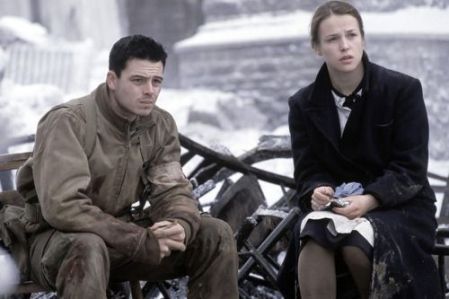
This one isn’t crucial. After all, some wonderful stories take place all within the same setting. But if you’re worried your scenes still “feel” too much the same even after examining the previous questions, a comparatively easy tweak is that of changing up the settings.
This can be especially handy in a dialogue-heavy story. Don’t set every conversation at the protagonist’s office or in the same restaurant. Mix it up. Have the characters talk in the car, talk in a pool hall, talk in a church, talk while helping each other move. Although settings should never be random, mixing it up can add surprising new opportunities and dynamics to your stories.
6. Are New Characters Adding New Dynamics That Are Different From Previous Scenes?Finally, examine how well you’re varying the different pieces available to you. Within any given story, you will have a set number of puzzle pieces that you can mix and match. Particularly, you’ll want to shuffle your supporting characters to allow different people to be present in different scenes.
Not only will this change up the “scenery,” it should also give you the opportunity to deepen any given scene’s complexity by bringing in the motives, desires, goals, grudges, etc., of many different personalities. A three-way conversation between your protagonist, her mother, and the local vicar will be a completely different conversation from one between your protagonist, her father, and the local sheriff—even if the topic under discussion is the same.
***
Sometimes recognizing repetitive scenes is the toughest part. After that, the solution (although not fun) is usually pretty easy. Either delete the scene you don’t need and/or combine its important bits with a more comprehensive and important scene. The result will be a much tighter and more interesting story.
Wordplayers, tell me your opinions! Do you ever worry about repetitive scenes in your stories? Tell me in the comments!Click the “Play” button to Listen to Audio Version (or subscribe to the Helping Writers Become Authors podcast in Apple Podcast or Amazon Music).
___
Love Helping Writers Become Authors? You can now become a patron. (Huge thanks to those of you who are already part of my Patreon family!)The post 6 Questions to Help You Avoid Repetitive Scenes appeared first on Helping Writers Become Authors.
October 18, 2021
How to Make Your Character’s Choices More Difficult
 One of the best things about conflict is that it pushes your characters to act. In every scene, your characters are making choices—big ones and small ones and thereby steering their fate. Some decisions will be obvious and require little to no thought, but others will be muddier, with no clear “better” option, generating inner conflict. These choices, provided the characters feel personally invested in the decision, act as a test, revealing who they are.
One of the best things about conflict is that it pushes your characters to act. In every scene, your characters are making choices—big ones and small ones and thereby steering their fate. Some decisions will be obvious and require little to no thought, but others will be muddier, with no clear “better” option, generating inner conflict. These choices, provided the characters feel personally invested in the decision, act as a test, revealing who they are.
Finding ways to naturally characterize our characters is gold in storytelling, so making the most of a character’s decisions is a wise move. But when we make choices a bit more complex, they go beyond black-and-white options, which creates tension and potentially painful consequences.
9 Types of Decisions Your Characters Will Have to MakeLet’s look at the types of quandaries that can make decision-making easier… or much more difficult.
1. MinorThese choices will be relatively simple, and the consequences won’t have much impact. Examples include decisions about what to order off a menu, which outfit to wear to the office, or whether to make an appointment now or later.
2. Win-WinThis is the one every character wants but rarely gets, because … writers are evil, and all that. A win-win means both options are good. Either way, the character comes out ahead and anyone impacted by the choice will be happy with the outcome. Win-wins are conflict killers, so if you use one, make sure it comes with some unforeseen price tag attached to it.
3. Win-LoseThese choices appear obvious; one is a good option, the other is not. It means someone will be happy and someone won’t, and this might be okay depending on who is on which end of the stick. For example, if the choice means your protagonist gets what he wants and his rival doesn’t, well, that’s the perfect happily-ever-after. But this scenario can be a hard one if the character has a close relationship with the person who loses. Consider your character’s anguish if he and his friend have both been poisoned, and there’s only one dose of the antidote. If he takes it, it means his friend will die. That’s a hard choice to make.
4. DilemmasWhen neither choice is ideal, you have a dilemma. Decision-making can require a lot of weighing and measuring, because no matter what choice is made, there will be blood. These choices often come down to what the character is willing to sacrifice and for how long. Preferences will also factor into the choice. Would the protagonist rather lose time or money? Should she admit the truth and suffer ridicule for a short time, or drag it out with denials that everyone will see through anyway?
5. Hobson’s ChoiceHave you ever been offered something you don’t really want, but maybe it’s slightly better than nothing? That’s a Hobson’s choice. An example would be applying for a promotion and instead being given the choice of a deep pay cut or being laid off.
6. Sophie’s Choice
Sophie’s Choice by William Styron (affiliate link)
This scenario is one in which the character must choose between two equally horrible options. Named for the book (and movie) Sophie’s Choice, in which the character must decide which of her two children will be killed, this is known as the impossible, tragic choice. However, it can also simply be a time-and-place decision in which the character can only be in one place at that time. And the ramifications don’t have to be catastrophic. They can be minor—as in the case of the character being able to attend his own college graduation or his grandmother’s 100th birthday party. Regardless of the decision, guilt will accompany the character’s choice in this kind of scenario.
7. Morton’s ForkThis choice is agonizing because both options lead to the same end. It’s Max (Mad Max) handcuffing Johnny the Boy to a gas tanker that has a time-delay fuse and handing him a hacksaw. Dying from the explosion or the loss of blood from cutting off his own ankle … it’s a deceptive choice because there is only one outcome.
8. Moral ChoicesMoral choices (Sophie’s Choice is one kind) are those requiring the character to decide between two competing beliefs or to choose whether or not to follow a moral conviction. Does she tell the truth because honesty matters—even when it will deeply hurt someone? Protect a loved one or turn him over to the police? Use an advantage to get ahead, knowing it would be wrong to do so? Moral choices require the character to rationalize the decision so she can feel okay about making it.
9. Do Something or NothingIn some cases, the character can choose whether to intervene or not get involved. He may not be personally impacted by the outcome either way, or there might be a cost: a risk to his reputation (if not acting paints him as a coward), the moral repercussions of deciding to do nothing (after, say, letting someone die), or even a safety cost (if he chooses to save someone who turns out to be a threat).
***
Whatever choices you weave into the story, find ways to create inner conflict. One method is to pair options that are equal in some way, such as choices that represent two fears, two needs, or two types of risks or sacrifices. You can also focus on elements that are in direct opposition to each other, such as pitting a fear against a need, duty against freedom, or a want against a moral belief. Conflicting emotions, especially the big ones, can also be used to give readers a front-row seat to a meaningful inner struggle.
Once the decision is made, the psychological turmoil can continue in the form of doubt and second guesses. Were the character’s motives pure? Should someone else have made the decision? A choice’s fallout, especially when the consequences negatively impact others, will add still more weight to the character’s burden of guilt and regret. And the closer she is to those impacted by the choice, the worse the fallout will be.
Need More Help With Conflict and How to Use It Effectively? The Conflict Thesaurus: A Writer’s Guide to Obstacles, Adversaries, and Inner Struggles (Volume 1) is packed with ideas on how to apply meaningful conflict to reveal your characters, challenge them, and keep the story tense and on track. It also digs into a plethora of conflict scenarios to help you plot fresh scenes.
The Conflict Thesaurus: A Writer’s Guide to Obstacles, Adversaries, and Inner Struggles (Volume 1) is packed with ideas on how to apply meaningful conflict to reveal your characters, challenge them, and keep the story tense and on track. It also digs into a plethora of conflict scenarios to help you plot fresh scenes.
The post How to Make Your Character’s Choices More Difficult appeared first on Helping Writers Become Authors.
October 11, 2021
Archetypal Antagonists for the Mage Arc: Evil and the Weakness of Humankind
 It is appropriate that the final archetypal character arc of the life cycle—the Mage Arc—should be the one to finally confront the ultimate antagonist within the human experience. This is, of course, Evil—in all its abstraction.
It is appropriate that the final archetypal character arc of the life cycle—the Mage Arc—should be the one to finally confront the ultimate antagonist within the human experience. This is, of course, Evil—in all its abstraction.
As the final arc, the Mage symbolizes the end of life and, presumably, its fulfillment. Because the Mage is such a powerful—and rare—personage, the mysteries of his arc are ones few writers ever personally embody, but still ones we instinctively speculate about. It is in the speculating that we sometimes are fortunate enough to offer to ourselves and perhaps to our readers a glimpse into greater truths and possibilities.
By its very numinosity and mysteriousness, the Mage Arc offers the opportunity for its archetypal antagonists to be personified in many different ways. As we’ve noted throughout this supplementary series, the archetypal antagonists faced within the successive life arcs grow increasingly less dualistic and more abstract as we go. In the First Act of life, the Maidens and the Heroes necessarily define “evil” as “the other” whom they are resisting and from whom they need to individuate. Indeed, they are therefore inclined to then insist that the very nature of “otherness” must indicate evil.
By the time the Crone makes peace with Death, it rather seems there is no concept of Evil left to confront. But the wisdom of the Mage sees a bigger picture that could only be instinctively and incompletely grasped in the earlier arcs. Perhaps most surprisingly, what the Mage recognizes is less Evil as a vast and primal entity, but rather as something comparatively “small”—the evil that is the destruction and unhealth in the hearts of humankind.
And so the antagonist the Mage faces, whether portrayed in metaphor or not, is ultimately one he himself cannot defeat. Indeed, the larger part of his arc is centered around the struggle of realizing that to exert his great power in taking control of the situation—and therefore robbing autonomy and choice from the younger denizens of the Kingdom—would be perhaps the greatest evil of all.
The Mage’s Archetypal Antagonists: Practical and ThematicMore than any of the preceding archetypal character arcs, that of the Mage can be seen as a “passing of the torch.” As the final life arc, the Mage’s story ends, whether literally or symbolically, with the Mage’s departure from this world. In future, he won’t be around, in any guise, to give the younger arcs a helping hand. From now on, they’re going to be on their own.
And so the great need represented by the Mage Arc is that of his somehow making sure the Kingdom will be okay in his absence—that the cycle of life will roll on, hopefully in health and goodness. His great challenge—his final challenge—is that of resisting the temptation to control this outcome, knowing that to do so would be to intrinsically destroy that natural cycle anyway: he would, in those poignant words, “meet his destiny on the road he took to avoid it.”
Evil as Archetypal AntagonistIs there any antagonistic force so archetypal as that of Evil? However much symbolic nuance resides within archetypes, they are, by their very nature, simplistic. They are black and white, without shades of gray or even moral complexity per se (unless, of course, the archetype represents moral complexity, as in, say, the Trickster). And Evil, of course, always seems very black indeed.
By its very starkness, the concept of Evil can sometimes be difficult to write about. These days, our post-modern minds may argue with one another about what constitutes Evil or even if it really exists. And yet conceptually it continues to show up in our fictional dreamscapes, over and over again, with varying degrees of resonance and applicability.
Although Evil can be and often is personified through the undeniably destructive and imbalanced actions of certain individuals, we see it portrayed most explicitly in fiction as nameless, faceless monstrosities. For example, the horror genre (although not often featuring Mage Arcs) is designed around representing faceless Evil in various guises. Serial killers are often masked, and monsters are often mindless and soulless. There is no explanation for Evil’s actions; it is beyond reason or even motive sometimes.
Within the younger archetypal arcs, antagonists may often be seen as Evil (and indeed may truly be so), but they are still usually personified in some way. These arcs are more concerned with simple conflicts that offer clear winners and losers. Whatever the antagonistic manifestation, it will be defeated in the form of the protagonist’s current “Lie.” The end. All is well. The Kingdom can exist happily ever after.
But the very nature of the life-arc cycle indicates that this happily ever after is only true until a new antagonistic force interrupts the character’s life in the form of a new “Lie” he or she must overcome.
Theoretically within this model of archetypal arcs, the Mage represents the finality of this cycle. Naturally, this is not literally true, both because this cycle is but one possible archetypal exploration of life and also because infinite concepts such as archetypes can have no truly finite ends (no matter how much fiction would like to make it so). Nevertheless, within this model, the Mage represents the “fulfillment” of the cycle and therefore an ultimate showdown with the single great Antagonist who has, in fact, been represented in all of the limited mindsets overcome throughout previous arcs.
The Evil the Mage faces may, of course, be represented as a great force that threatens the Kingdom—such as we find in so many fantasies and most notably with the Great Eye of Sauron in The Lord of the Rings.
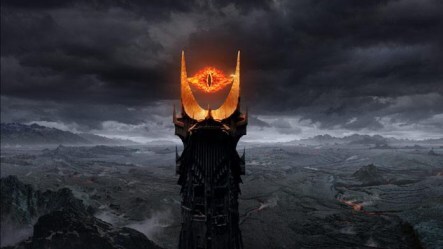
Even if this force employs a mortal army (as with Sauron’s legions of orcs), the force itself represent an infinitude of some kind. More specifically, in its effects, it is usually recognized by the fact that it would eliminate free choice. In fantasy it may literally do this by mind-slaving people, or more practically it may either exert a powerful tyranny and/or kill people—thereby robbing them of any choice at all.
Therefore, we can see how Evil need not always be presented on a grand scale. If your Mage character is Gandalf, he will of course require a grand theater of metaphor in which to operate.
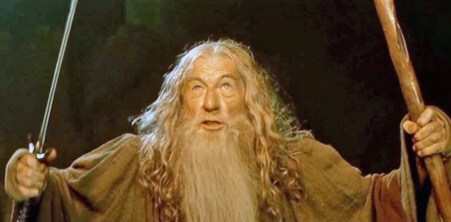
But if your character is to appear in realistic fiction, then the Evil he faces can be as realistically “small” as simply the potential corruption infecting the heart of one single being—such as Will Smith’s Bagger Vance faces in the heart of Matt Damon’s character.

“Evil” is a very big word—and a very big antagonist. But in many Mage stories, this Evil manifests in the smallest of ways—not even in an obviously “evil” person, but simply in an ordinary person’s weakness (or what Mage character Queenie in Larkrise to Candleford calls “human frailty”).
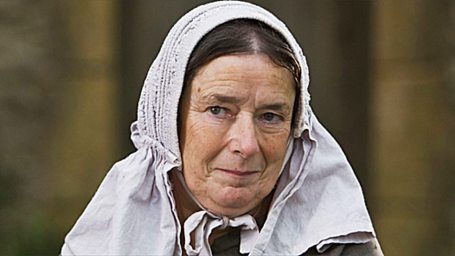
This weakness is most poignantly obvious not in the hearts of the Mage’s “enemies,” but in the hearts of those very youngsters he loves and would mentor—the Maidens, Heroes, Queens, Kings, and even Crones whom he is about to leave behind. The Mage’s great challenge is not to use his accumulated life’s power to destroy the Evil, but rather to gather his wisdom to avoid the temptation of turning himself into that very Evil by taking away control—and free will—from these younger, weaker characters.
In a triumphant Mage Arc, his very example and his great wisdom will be enough to inspire positive and necessary change in his wards. It is not the Mage who defeats the Evil in the end, but those in the Kingdom who have overcome the weakness in their own hearts. To the degree the Mage tries to protect the younger characters from facing the full conflict, or to the degree he attempts to control or manipulate their choices, he becomes Evil. And because he is a supremely advanced and powerful archetype, this fatal weakness in his own human heart will prove more dangerous than whatever Evil he resisted in the beginning.
How Evil and the Weakness of Humankind Operate in the Conflict and the Climactic MomentDepending on how you choose to represent Evil as an antagonist within your story, you may emphasize it either as a huge and overwhelming “force” or as a much smaller conflict within a single relationship. There is the opportunity within the Mage Arc to either go really big and epic or really microscopic and intimate.
In a story that emphasizes Evil as a supernatural force, this force will usually motivate the external conflict. It may even create a great war in which forces of Good and Evil oppose each other. But even within the forces of “Good,” the Evil will creep in on a more personal and interrelational level, as the Mage witnesses the weakness and temptation encountered by younger characters.
By contrast, a story that starts out emphasizing this potential for weakness within younger characters (and indeed the Mage himself) will usually focus more intimately on the consequences of the human characters’ choices and actions. To the degree the Mage’s influence fails—or to the degree the Mage himself manipulates outcome—Evil will result in ways both large and small, creating plot obstacles and conflict.
For the Mage protagonist, the Climactic encounter is less about defeating an enemy and more about surrendering to the end of life. Whether literally or metaphorically, he steps out of this mortal theater, leaving the younger archetypes to fight the battles they are meant to fight as they continue to progress through their own life cycles.
Although not a protagonist, Master Oogway in the animated film Kung-Fu Panda offers a beautiful example of a character who fulfills all the best qualities of a true and positive Mage. With utter love but absolutely no attempt at control, he recognizes when it is time to leave the challenges of this life to those whom he has trained up behind him.
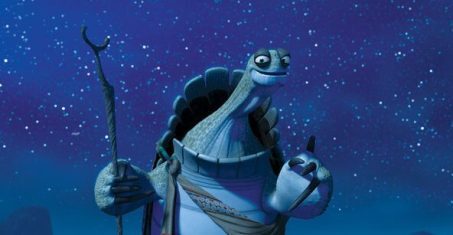
In many ways, the Evil represented by antagonistic forces in a Mage Arc is simply “the Lie the Characters Believe.” If the younger characters are able to manifest their own Positive-Change Arcs and overcome their individual Lies from whatever stage of their journeys, the Evil will be both defeated and transmuted. In exemplifying this, the Mage may not directly determine the end of the story’s conflict, but he will at least initiate his beloved others to do so.
***
And so we come to the end of our exploration of archetypal antagonists in association with the life-arc cycle. Naturally, the twelve archetypal antagonists presented here are but a tiny fraction of possible archetypes to choose from in portraying your antagonist characters. However, these archetypal forces—whether depicted literally or abstractly—are the ones that create the practical and thematic conflicts for each of the archetypal character arcs. Even if you choose to use other archetypal antagonists in your stories, understanding how these forces integrally interact with life progressions can be helpful in crafting deeply resonant and cohesive fiction.
Related Posts:
Story Theory and the Quest for MeaningAn Introduction to Archetypal StoriesArchetypal Character Arcs: A New SeriesThe Maiden ArcThe Hero ArcThe Queen ArcThe King ArcThe Crone ArcThe Mage ArcIntroduction to the 12 Negative ArchetypesThe Maiden’s Shadow ArchetypesThe Hero’s Shadow ArchetypesThe Queen’s Shadow ArchetypesThe King’s Shadow ArchetypesThe Crone’s Shadow ArchetypesThe Mage’s Shadow ArchetypesIntroduction the 6 Flat ArchetypesThe ChildThe LoverThe ParentThe RulerThe ElderThe MentorHow to Use Archetypal Character Arcs in Your StoriesSummary of the Archetypal Character ArcsArchetypal Antagonists for Each of the Six Archetypal Character ArcsMaiden Arc: Authority and PredatorHero Arc: Dragon and Sick KingQueen Arc: Invader and Empty ThroneKing Arc: Cataclysm and RebelCrone Arc: Death Blight and TempterWordplayers, tell your opinions! Can you think of any further examples of Evil and the Weakness of Humankind as archetypal antagonists in Mage-Arc stories? Tell me in the comments!Click the “Play” button to Listen to Audio Version (or subscribe to the Helping Writers Become Authors podcast in Apple Podcast or Amazon Music).
___
Love Helping Writers Become Authors? You can now become a patron. (Huge thanks to those of you who are already part of my Patreon family!)The post Archetypal Antagonists for the Mage Arc: Evil and the Weakness of Humankind appeared first on Helping Writers Become Authors.
October 4, 2021
Archetypal Antagonists for the Crone Arc: Death Blight and Tempter
 As the fifth of six archetypal character arcs in the life cycle, the Crone Arc offers the first great challenge of a character’s Elder years. Fundamentally, it is a story about a character coming to grips with the full magnitude of mortality.
As the fifth of six archetypal character arcs in the life cycle, the Crone Arc offers the first great challenge of a character’s Elder years. Fundamentally, it is a story about a character coming to grips with the full magnitude of mortality.
And indeed Death itself is the primary archetypal antagonist within a Crone Arc—or at least seems to be.
As noted in previous posts, the protagonist’s view of the archetypal antagonists evolves right along with her progression through the life arcs. What begins as a decided “me versus them” viewpoint in the earlier arcs becomes increasingly more complex. By the time the character is challenged to decide whether or not she will “fight” that greatest of enemies—Death itself—she will surprise herself with the realization that perhaps Death is no enemy at all.
But this is a realization for the Climax of a Crone Arc, when finally she is able to move into the “Liminal World” of the Mage. Throughout most of her story, the Crone’s antagonistic forces are represented more specifically as a Death Blight and as the subtle Tempter who would lure her away from the Truth.
You may remember the Crone begins her story feeling rather played out. Having just completed her King Arc, in which she nobly sacrificed her temporal power and position (her “life” in its previous guise), she may now be struggling with feeling the best part of her life is over and that she might now perhaps just give in to the somnolent lure of a well-earned retirement. Her primary challenge is that of surrendering to her mortality—to Death—and in so doing resisting the temptation to wage war against Life out of her bitterness that it should be so. Furthermore, she is inspired to begin bringing her story full circle by fostering new Life, via the young of her Kingdom who still desperately require her wisdom and initiatory powers.
The Crone Arc begins to become more symbolic and metaphoric than any of the previous arcs (unless of course you play it out “literally” in speculative fiction of some kind). This is because, ultimately, her journey is an internal one. Her experience of the forces of Death, Life, and Temptation are ultimately all within. These antagonistic forces can, and probably will, be externalized as entities within the plot. But the true power and threat they represent is still something projected onto them from within the Crone herself.
The Crone’s Antagonists: Practical and ThematicCrone Arcs can be wildly fantastic adventures. But they are just as often quiet stories of internal contemplation, peopled by few supporting characters. Either way, it is useful to remember that the external plot will be driven by a “practical” antagonist—one who creates specific obstacles to the protagonist’s ultimate plot goal. Here, this external antagonistic force is the Death Blight.
Meanwhile, the Tempter may or may not be personified. If he or she is represented by an actual character, this character is often one of the most literal presentations of the Contagonist. The Contagonist is an ultimately antagonistic character, but one who does not start out obviously aligned with the antagonistic force. This character may oppose different facets of the protagonist’s plot goal, or may seem (and indeed may literally be) an ally. The crux of the relationship, however, is that the Contagonist is not aligned with the protagonist’s ultimate thematic Truth and will consciously or unconsciously tempt the protagonist away from that Truth and back into the Lie. (You can think of the Contagonist as a “negative mentor.”)
Often, in a Crone story, the Death Blight and Tempter will seem integrally related, even if they are not in the end. Therefore, it can be easier than in other types of stories to blur the lines between the two, depending on how specifically they are represented in the story (i.e., by other characters).
The Death Blight as Archetypal AntagonistNot to be too glib, the Crone’s great lesson is that maybe Death isn’t so bad after all. Or, more seriously, that Death and Life are not separate, that indeed they cannot be. To be in love with Life is to accept Death; to live a good life is to surrender to Death. And vice versa, to embrace Death is to embrace Life utterly.
This, however, is the ultimate Truth the Crone finds by the end of her story. What prompts her to take this journey in the story’s beginning is a seeming Death Blight upon the Kingdom. And this face of Death seems anything but Life-affirming.
Although ultimately signifying nothing more than the Crone’s own limited view of Life and Death, the Death Blight may be externally represented in the story in many different ways. It may be represented by limiting aspects of old age, such as illness or controlled living circumstances (e.g., being forced to move to a retirement home, etc.).
It can also be portrayed via unhealthy patterns shown in younger characters. Because the Crone’s most frequent relationship character is often a young Maiden or Hero whom she initiates, the Death Blight may show up in the lifestyle of an unhappy teen embracing some form of “death culture” (such as drugs or other destructive patterns).
The Crone might also face high stakes in the broader world—an actual Death Blight of some kind descending upon the larger setting of her “Kingdom.” It could be she is not the only Elder who is being threatened by tyrannical younger characters and that she is the one to accept the journey into the Crone Arc in defense of the others. Or she may face an evil “spirit” of the land or culture that is poisoning the healthy evolution of younger archetypes.
And, of course, she may face large-scale embodiments of malignant Death, via war or even something fantastical such as a zombie apocalypse.
Regardless, the antagonist she is ultimately facing is not Death in its true nature, but rather an imbalance of Life and Death. This could be because the prevailing culture has embraced Death in some violent way (such as in Nazi Germany), or it could be because the culture has rejected Death and refused, as the Crone is now being asked to do, to confront and embrace Death’s natural and beautiful function.
The Tempter as Archetypal AntagonistThe Tempter may be merely an internal voice within the Crone’s own head—seducing her into the notion that there is power to be had over Death or in resisting it. Most often, however, the Tempter will be an externalized character. This character may be an “ally” of the Crone, urging her to reject her growing understanding of the importance of Death. Or the character may, in fact, be the orchestrator of the Death Blight (or at least someone who thinks they are able to control this malignant force).
Because the Crone is, symbolically, quite a powerful character, this Tempter is often represented by an equally or even more powerful character, such as the aggressive shadow version of the Mage—the Sorcerer. As such, the Tempter is a character who can be used to represent the dark potential in the Crone herself should she he heed his sugared words or tempting example.
In Pixar’s Up, one of the more popular Crone Arcs of the period, we see the Tempter represented by the character of Charles Muntz. The protagonist Carl has idolized this mysteriously vanished explorer all his life, but does not encounter him until his Elder years when he slowly begins to realize Muntz has turned malignant in his rejection of Death and his own mortality and now threatens the beautiful Life of the very rain forest he once championed.

Whether the Tempter is “master” or “servant” to the Death Blight, his primary function is that of trying to unleash and harness the Crone’s own potential for “blighting” the Kingdom.
How the Death Blight and the Tempter Operate in the Conflict and the Climactic MomentThe Death Blight will represent the external conflict and its main problem in some way. It could be this problem literally grapples with questions of Life and Death. But it could also be that the Death Blight’s manifestation is merely a metaphor for the Crone protagonist’s inner evolution into a new and broader perspective about the importance of this final act of her life.
In facing the obstacles created by the Death Blight, the Crone will simultaneously be asked to face her fear of and resentment toward her own mortality.
The Tempter, meanwhile, may be either represented merely by the Crone’s own inner conflict or by a primary relationship character or by an obvious antagonist who is “creating” the circumstance of the Death Blight. What is important in regards to the Tempter is that he or she (or it) does in fact offer a legitimate temptation. The more powerful the Tempter’s argument, the more powerful will be the Crone’s ultimate transformation (or, in a Negative-Arc story, her lack thereof).
Depending on the nature of the story, the Death Blight may not be defeated in the Climactic Moment but instead redeemed or healed. The Blight aspect is removed and what remains is just Death—and Life. The Tempter may be entirely bypassed in this process. If the Tempter was “slave” to the Death Blight, then he will likely be destroyed in its absence. If the Tempter was “master,” causing and wielding the Blight, then he will either be directly defeated or simply stripped of his power through some clever (and surrendered) move on the Crone’s part.
However, it is always possible that little to nothing changes in the outer plot in the Climactic Moment of a Crone story. Because the thematic grappling with Life and Death is ultimately something that happens within the Crone, it is her final internal Truth that matters. Her acceptance, surrender, and inner peace is the final victory in her story, no matter the external trappings of the conflict.
Stay tuned: Next week, we will explore the archetypal antagonists of the Mage: Evil and the Weakness of Humankind.
Related Posts:
Story Theory and the Quest for MeaningAn Introduction to Archetypal StoriesArchetypal Character Arcs: A New SeriesThe Maiden ArcThe Hero ArcThe Queen ArcThe King ArcThe Crone ArcThe Mage ArcIntroduction to the 12 Negative ArchetypesThe Maiden’s Shadow ArchetypesThe Hero’s Shadow ArchetypesThe Queen’s Shadow ArchetypesThe King’s Shadow ArchetypesThe Crone’s Shadow ArchetypesThe Mage’s Shadow ArchetypesIntroduction the 6 Flat ArchetypesThe ChildThe LoverThe ParentThe RulerThe ElderThe MentorHow to Use Archetypal Character Arcs in Your StoriesSummary of the Archetypal Character ArcsArchetypal Antagonists for Each of the Six Archetypal Character ArcsMaiden Arc: Authority and PredatorHero Arc: Dragon and Sick KingQueen Arc: Invader and Empty ThroneKing Arc: Cataclysm and RebelWordplayers, tell me your opinions! Can you think of any further Crone stories that feature the Death Blight and the Tempter? Tell me in the comments!Click the “Play” button to Listen to Audio Version (or subscribe to the Helping Writers Become Authors podcast in Apple Podcast or Amazon Music).
___
Love Helping Writers Become Authors? You can now become a patron. (Huge thanks to those of you who are already part of my Patreon family!)The post Archetypal Antagonists for the Crone Arc: Death Blight and Tempter appeared first on Helping Writers Become Authors.
September 27, 2021
Archetypal Antagonists for the King Arc: Cataclysm and Rebel
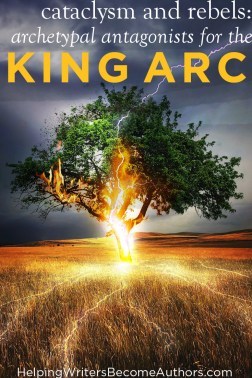 The King Arc begins the second half of the life cycle of archetypal character arcs. This placement as the fourth of six arcs necessarily makes it a turning point within the overarching “story structure” of life. We can recognize this particularly in the King’s relationship to his archetypal antagonists.
The King Arc begins the second half of the life cycle of archetypal character arcs. This placement as the fourth of six arcs necessarily makes it a turning point within the overarching “story structure” of life. We can recognize this particularly in the King’s relationship to his archetypal antagonists.
The first three arcs—those of Maiden, Hero, and Queen—are primarily concerned with gaining power. The final three arcs—those of King, Crone, and Mage—are primarily concerned with surrendering power. As such, the early arcs often demonstrate comparatively narrow and dualistic views of the antagonistic forces that oppose them. For the young Maiden, the entire thrust of her transformation is that of individuating from Authority and becoming a separate person. The Hero then faces a dehumanized antagonistic force represented by the Dragon. And the Queen, although beginning to recognize her antagonist of Invader as her equal, still pushes back with an “us versus them” mindset.
By the time we reach the challenges of the King Arc, however, this relationship to the antagonist begins to dramatically shift. The central challenge of the King Arc is that of recognizing a larger realm of power and potential, beyond the physical sphere on which he has so far spent all his focus. As the successful Ruler of a vast Kingdom—and indeed perhaps even an Empire—he has necessarily moved beyond the Queen’s small “us versus them” mindset to recognize the interconnectedness of all the subjects within his realm—and indeed himself with them.
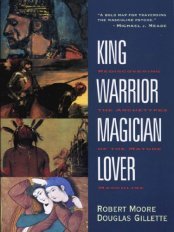
King, Warrior, Magician, Lover by Robert Moore and Douglas Gillette (affiliate link)
In King, Warrior, Magician, Lover, Robert Moore and Douglas Gillette note:
The good king always mirrored and affirmed others who deserved it. He did this by seeing them—in a literal sense, in his audiences at the palace, and in the psychological sense of noticing them, knowing them, in their true worth. The good king delighted in noticing and promoting good men to positions of responsibility within his kingdom. He held audience, primarily, not to be seen (although this was important to the extent that he carried people’s own projected inner King energy), but to see, admire, and delight in his subjects, to reward them and to bestow honors upon them.
Therefore, it is interesting to observe that the King’s archetypal antagonists are much more “connected” to him, and that indeed much of his arc is about recognizing and even consecrating this connection.
The King faces the archetypal antagonists of Cataclysm and Rebel, both of which present challenges that ask him to culminate his rule in a way that blesses his Kingdom—even as he himself must journey on into the misty and liminal spaces of the Third Act of Elderhood.
The King’s Antagonists: Practical and ThematicAs ever, the entire concept of archetypal antagonists is rooted in deeply symbolic language. In an equally symbolic story—such as those in the fantasy genre—these antagonists may be realized literally. But in more realistic stories, such as those set in our modern world, these antagonistic forces can be recognized as just that—forces.
The Cataclysm, particularly, is a force. It represents a supernatural power descending upon the Kingdom and demanding the King evolve his tactics. Up to this point, the King has successfully defended his Kingdom from any number of “natural” enemies. In essence, he began his career back when he was the Queen staving off the threat of Invaders from without. Up to now, his “strong right arm” and the “sword of his mind” have proven more than capable of dealing with all comers.
But the advent of the Cataclysm signals that he is being called into his next arc. Much like the Invaders in the previous Queen Arc, the Cataclysm represents a threat from “beyond” and therefore one that creates the external conflict within the plot. Meanwhile, it is the King’s own subjects who represent the threat from within the Kingdom, as the Rebels—disgruntled by the changing times, still lacking in maturity, and frightened of this Cataclysm which they are as yet even less equipped to comprehend.
Cataclysm as Archetypal AntagonistAs with all of the primary and external antagonists within these arcs, the Cataclysm is foundationally the reason the protagonist is being challenged to undertake this stage in his evolution. If this challenge were never to arrive and alter the status quo, there would be no reason (and arguably no ability) for the character to change.
The Cataclysm represents a particularly powerful antagonistic force. Partly, this is due to its awesomely destructive nature. As the first of the “spiritual” antagonists (followed by the Death Blight in the Crone Arc and Evil in the Mage Arc), the Cataclysm inevitably feels a bit apocalyptic. Mostly, this is due to its unprecedented and therefore unknown nature. This is like nothing the protagonist has faced before; or, more practically, it is something against which all the old successful methods will not work.
More personally to the King, the Cataclysm simply represents the turning of the tide within his own life. He is growing older. He is approaching the end of his physical vigor. And even though old age and death may yet be decades in the future, he is now closer to his death than to his birth.
And so, although the Cataclysm may indeed be represented as a supernatural force, it may also be represented in a quieter or more realistic story as simply the character’s need to grapple with the end of an era within his job or family life.
In the beginning of the story, the King will see the Cataclysm as an enemy, perhaps even accepting a narrative in which this force is malignant and deliberately “out to get him” or his subjects. Because his story is one in which he is being asked to leave his throne (willingly or not), he will have to acknowledge and deal with feelings of resistance and resentment.
But if he succeeds in facing this antagonist, he will come to realize its antagonism is not personal. Indeed, the Cataclysm is a supernatural force. Even though its consequences are frightening, it is in fact a messenger warning the King of changes that must be made if the balance of his own and his subjects’ health is to be maintained.
Symbolically, the only way to defeat the Cataclysm and protect the Kingdom from its threatened apocalypse is for the King to sacrifice himself to restore balance. The Cataclysm is not “out to get him”; rather, it is offering him the opportunity to avoid destruction. As such, the King will come to realize the Cataclysm is less an enemy than a strange friend.
Rebel as Archetypal AntagonistSo why does the King have to give up his throne anyway? A true King is a good King. Seems like we should keep him on his throne as long as possible, right?
First of all, keep in mind that just because someone reaches the true and archetypal stage of Ruler (in the positive sense) does not mean he will ever be called to take the King Arc. Many people will spend their elder years as Ruler, never taking the Crone or Mage Arcs (and some people never make it to the King Arc at all). This isn’t necessarily a bad thing, since whether or not someone is called to take these archetypal arcs can depend largely on contextual social needs. No one person’s archetypal journeys take place within a vacuum.
But if the King is indeed called upon this transformative journey, in which the Cataclysm signals an impending and destructive imbalance within the Kingdom, it is likely because it is time for his young subjects to rise into their own roles of leadership. If the King were to refuse to step aside to make way for the new Queens and, by extension, if he were to refuse to take his own initiations into Elderhood and therefore be incapable of further initiating the younger Maidens and Heroes—he would block the growth of the overall Kingdom. Stagnation and rot would set in: cataclysm.
We can see the results of this failure on the King’s part in that he often shows up in the negative shadow aspect of Tyrant in Queen stories. But we also see his inner conflict with this reality even within his own successful arc.
In any King Arc, younger characters will be prominent and important. If the King’s story is about leaving the throne, then there must be someone to whom he passes the crown—worthy Heroes and Queens who will benefit from his stalwart legacy.
But there will also be Rebels. These characters represent an antagonistic force within the Kingdom. Catalyzed by the fearsome Cataclysm—which they, unlike the true King, lack the wisdom to understand—they distrust the King’s responses to this emergency. The Rebels ultimately represent that part of the King’s psyche that also wants to rebel against this new reality, that seeks power by any means.
Externalized, the Rebels deepen the complexity of the narrative by providing a convincing argument for the King not to abandon his throne and sacrifice himself to the Cataclysm. After all, these rowdy upstarts are clearly unready to replace him in all his wisdom and experience.
Depending on the nature of the story, the Rebels may be redeemed into worthy successors—or they may be defeated by those among the King’s subjects who are worthy to take up his crown.
How the Cataclysm and Rebels Operate in the Conflict and the Climactic MomentUsually, the Cataclysm will represent the outer conflict—the main problem the protagonist is trying to solve. This could be a literal apocalypse or it could be the dissolution of the character’s business, or it could be an illness such as cancer or Alzheimer’s that is threatening the character’s previous mode of life.
Almost always, the Cataclysm will be presented as something abstract. The enemy will not be human even if it employs a human army. Alternatively, the “mastermind” might be a mortal who unwittingly wields a supernatural power he does not fully understand and which escapes the “leash.” The Cataclysm is a deep existential problem, but it is not a person or group of people who can be easily “vilified.”
By contrast, the Rebels are almost human characters who are close to the King. While the Cataclysm represents the Antagonist, the Rebels are more likely to represent the Contagonist—a force that is not directly opposed to the King, but which starts out seemingly aligned with him only to try to tempt him off his true path.
The Rebels offer much opportunity for thematic complexity and depth, since they can be represented by both shadow archetypes as well as positive-but-simply-immature archetypes. Although the Rebels may indeed be aggressive shadow archetypes—Bullies and Sorceresses—who wish to usurp the power of the throne for their own means, they may also simply be young upstarts who don’t yet “know that that they don’t know.”
Ultimately, all varieties of Rebels are the King’s subjects, and he will feel an alignment with them and a call to protect and serve them. It is very possible for even far-gone Rebels to be redeemed by the King’s sacrifice in the end, such as seen with the character of Edmund in C.S. Lewis’s allegory The Lion, the Witch, and the Wardrobe.

The Climactic Moment in a King story will be his sacrifice—that moment when he surrenders himself to the warning of the Cataclysm and gives his life to right the balance of his Kingdom. Depending on how the Rebels are represented within the story, this sacrifice on the King’s part may instantly redeem them—or defeat them. But it’s also possible the Rebels will be dealt with in the Climax by those of the King’s younger subjects who have remained faithful—his Heroes and Queens. It’s also possible the Rebels will not be dealt with until after the Climactic Moment, as more of a loose end in the Resolution. This may especially be true if the King literally dies, and the new Queen/King must deal with the Rebels in the aftermath.
Although the more dualistic and simplistic relationship between the younger archetypes of Maiden, Hero and Queen and their antagonists is valid and important, the King Arc can be a good choice if you’re wanting to explore a different take on “good versus evil” in your stories. The King’s increasingly complex relationship with his antagonists offers much grist for thematic exploration.
Stay Tuned: Next week, we will study the archetypal antagonists of the Crone: Death Blight and Tempter.
Related Posts:
Story Theory and the Quest for MeaningAn Introduction to Archetypal StoriesArchetypal Character Arcs: A New SeriesThe Maiden ArcThe Hero ArcThe Queen ArcThe King ArcThe Crone ArcThe Mage ArcIntroduction to the 12 Negative ArchetypesThe Maiden’s Shadow ArchetypesThe Hero’s Shadow ArchetypesThe Queen’s Shadow ArchetypesThe King’s Shadow ArchetypesThe Crone’s Shadow ArchetypesThe Mage’s Shadow ArchetypesIntroduction the 6 Flat ArchetypesThe ChildThe LoverThe ParentThe RulerThe ElderThe MentorHow to Use Archetypal Character Arcs in Your StoriesSummary of the Archetypal Character ArcsArchetypal Antagonists for Each of the Six Archetypal Character ArcsMaiden Arc: Authority and PredatorHero Arc: Dragon and Sick KingQueen Arc: Invader and Empty ThroneWordplayers, tell me your opinions! Can you think of any examples of the Cataclysm and the Rebel as archetypal antagonists in King-Arc stories? Tell me in the comments!Click the “Play” button to Listen to Audio Version (or subscribe to the Helping Writers Become Authors podcast in Apple Podcast or Amazon Music).
___
Love Helping Writers Become Authors? You can now become a patron. (Huge thanks to those of you who are already part of my Patreon family!)The post Archetypal Antagonists for the King Arc: Cataclysm and Rebel appeared first on Helping Writers Become Authors.
September 20, 2021
Archetypal Antagonists for the Queen Arc: Invader and Empty Throne
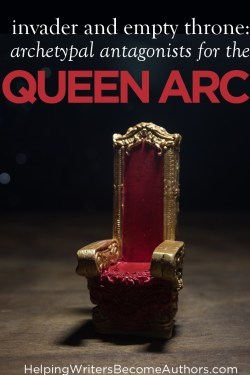 As the third of the life cycle’s archetypal character arcs, the Queen Arc is that of the mature adult who has completed the youthful arcs of Hero and Maiden and is now challenged to grow into a position of greater responsibility and leadership. This is the tale of someone who has so far proven herself worthy of love and responsibility in relationship, community, and perhaps parenthood. But now life calls for a further transformation—into capably accepting a true position of power.
As the third of the life cycle’s archetypal character arcs, the Queen Arc is that of the mature adult who has completed the youthful arcs of Hero and Maiden and is now challenged to grow into a position of greater responsibility and leadership. This is the tale of someone who has so far proven herself worthy of love and responsibility in relationship, community, and perhaps parenthood. But now life calls for a further transformation—into capably accepting a true position of power.
The Queen Arc can be seen to come after the well-known Hero Arc both mythically in the sense that “what happens after” the Hero Arc is often the victorious Hero being given a position of leadership. More prosaically, it can be seen simply in the life of a modern person who has successfully “grown up” (with the “Quest” signified by perhaps going to college, getting married, or committing to a career) and who is now beginning to tend the needs of the up-and-coming generation.
If the Hero Arc was about reconciling the potential for Power with the goodness of Love, the Queen Arc then is about recognizing that leadership requires not just Love but also the ability to create Order. As such, the Queen’s archetypal antagonists can be seen to be represented by the twofold threat of Invaders from beyond her happy home and the Empty Throne that fails to protect her and her family. Together, these two antagonistic forces are what catalyze the need for her next transformative arc. There is a dearth of leadership in the Kingdom, and she is being called to fulfill it.
The Queen’s Antagonists: Practical and ThematicOnce again, we can see in these dualistic archetypal antagonists the two faces of a story’s conflict: outer and inner, plot and theme. One represents the main thrust of the external conflict—whatever or whoever is framing the larger conflict and therefore the need for the Queen’s ultimate plot goal of protecting or furthering those who depend upon her. The other antagonistic force represents more specifically the protagonist’s inner drama—the inner obstacles that are both driving and blocking her ability to become the person she needs to be in order to triumph in the external conflict.
Usually in a Queen Arc, the Invader represents the outer antagonist and the Empty Throne represents the inner antagonist. However, as with all of these symbolic antagonists, it is possible to achieve many flexible dynamics. For example, if the Empty Throne is truly empty, it may be an antagonistic force represented almost entirely by the Queen’s own insecurities or inner resistance to sitting upon that throne. But if the throne is empty symbolically, in the sense that the current leadership is corrupt, then she may face a Tyrant character (perhaps in a Contagonist role) who must be defeated before she can truly save the Kingdom from the Invaders.
Invader as Archetypal AntagonistThe Queen Arc is just one step up from the very dualistic mindset of the Hero Arc—in which the Hero faced the “evil other” of the animalistic Dragon. The Queen’s primary external antagonist is also still fundamentally viewed as “other,” although this time the antagonist is at least humanized. Because the Queen’s purview of life is still comparatively small (i.e., the Kingdom), she starts out still operating from a very “us vs. them” mindset. Her heart belongs to her people and only her people.
And so when a threat arrives from “outside” the Kingdom, it is accepted as a danger to all she holds dear. Probably this antagonistic force of Invader is also operating from this same “us vs. them” mindset, although more aggressively than defensively.
As such, there is certainly room within the Queen Arc to explore broadening mindsets. The Queen may end her story by subduing the Invaders, but she may also come to terms with them, inviting them into the protection of her Kingdom (now that she has transitioned into a fully realized Ruler) as equals rather than conquests. Regardless, part of the Queen’s transformation is that of mentally moving into a larger setting. She begins her story feeling safe within the walls of the Kingdom and ends by looking beyond the walls to the larger realm to which she is now accountable and responsible.
What is most foundational to the Invader as an archetypal antagonist is that it begins the story by presenting a real threat to the “home life” the Queen has built and which she holds so dear. She probably has no real desire to become a Ruler (or, if she does, she struggles with its ambitious shadow aspects). But the Invader catalyzes the necessity of her growth. If she wishes to protect what she has built, she must expand her capabilities.
Empty Throne as Archetypal AntagonistIf the throne were not empty, there would be no need for the Queen to undergo her arc. She begins the story not as the King but as the Queen. It’s not her job to defend the Kingdom from Invaders. But when she faithfully looks to the existing leadership paradigm to do just that, she discovers the throne is empty.
This may not be an instantaneous discovery. Gradually, it will become clear to both the Queen and her children that nobody is helming the ship. Or if someone is steering, he is doing either a wretchedly incompetent or a criminally corrupt job of it.
The Invader represents the catalyst that prompts the Queen’s journey, but it is the Empty Throne that demands she complete it. However happy she may (or may not) be to act as the Ruler’s lieutenant, there is in fact no true Ruler for her to support. If she’s going to achieve her plot goal and defend the needs of her family, she will have to rise to the task herself.
Often, the Empty Throne will be represented by a Tyrant character who must be overthrown in order to protect the Kingdom from the larger threat of the Invader. Although the Tyrant may indeed damage the Kingdom in his own right, he is not initially so great a threat that he immediately prompts the Queen to confront him. He is perhaps more a petty tyrant than a violent one (in the latter case he could likely be considered an Invader in his own right). Most importantly, the Tyrant proves himself the obstacle standing between the Queen and the defeat of the Invaders.
It’s also important to note that the Empty Throne need not always be representative of an evil force—of negligence or corruption. Because the Queen Arc marks a healthy and necessary progression in life, there is implicit within the arc the understanding that the throne must be cyclically vacated. Indeed, as we’ve explored previously, the King Arc is that of willingly stepping down from power for the good of all.
The Queen may be preceded by a good King, one who has faithfully sacrificed his leadership to protect his Kingdom. Indeed, he may do so in congruence with the Queen’s own arc. If in this case, the Empty Throne will be a naturally arising challenge for the Queen to grow into. But even in this scenario, the Empty Throne remains representative of an antagonistic force because it signifies the Queen’s inner resistance to fully accepting this throne. When offered the crown, she may, like Prince Henry in Ever After, declare, “I don’t want it!”
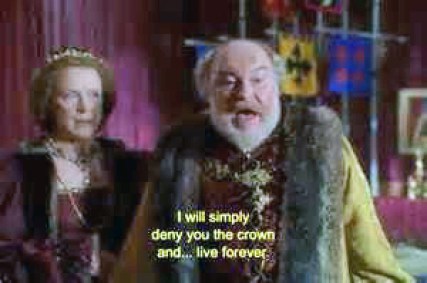
Or she may be wary of her own tyrannical proclivities should she be given so much power over other people’s lives—such as with Aragorn in the film versions of The Lord of the Rings, who feared his lineage’s weakness for the Ring’s dark power.

The Invader will usually be the primary actor in the external conflict (even if it is just a framing conflict). The bulk of a story’s scenes may be about the dynamic between the Queen and the Empty Throne, but the central thrust of the plot is toward and in response to the Invader. The “invasion” may be featured in many different guises, everything from the slow advance of a literal enemy force to the encroaching deadline for a neighborhood’s destruction to a high school presidential campaign against a brazen newcomer. Whatever the case, this is the primary obstacle the Queen is focused on, in ways large and small, on every page of the story.
The Empty Throne, meanwhile, may be one of many obstacles she faces on her route to fending off the Invader, but it is the main obstacle. As such, it may well take up many of the book’s scenes as the Queen grapples with either overthrowing a Tyrant and/or claiming her own true leadership capacity in order to do what is necessary to defend the Kingdom.
The Invader will likely be the primary antagonist defeated in the Climactic Moment. Even if the Queen has yet to officially take the throne upon defeating the Invaders, her defeat of the Empty Throne will not be the Climactic Moment. The only exception is if the Tyrant and the Invader are represented by the same character or force, in which case she will, of course, defeat both archetypes simultaneously.
Although the classic symbolism of this story indicates the Queen will repel the Invader by force and literally take the throne, becoming an uncontested leader, the actual stories need not be so simplistic. It may be that instead of subjugating the Invaders, she reconciles with them, either inviting them under her protection as subjects of her realm or respecting them as a sovereign nation in their own right. It may also be that she does not take someone else’s physical throne, but simply learns to inhabit the Empty Throne in her own heart, embodying true sovereignty without necessarily ruling over a specific Kingdom or people (family, business, etc.).
In whatever way the archetypal antagonists of Invader and Empty Throne manifest in your Queen-Arc story, what is most important is that they represent the catalytic necessity for the Queen’s own growth into a true “servant-leader.”
Stay Tuned: Next week, we will explore the archetypal antagonists of the King Arc: Cataclysm and Rebels.
Related Posts:
Story Theory and the Quest for MeaningAn Introduction to Archetypal StoriesArchetypal Character Arcs: A New SeriesThe Maiden ArcThe Hero ArcThe Queen ArcThe King ArcThe Crone ArcThe Mage ArcIntroduction to the 12 Negative ArchetypesThe Maiden’s Shadow ArchetypesThe Hero’s Shadow ArchetypesThe Queen’s Shadow ArchetypesThe King’s Shadow ArchetypesThe Crone’s Shadow ArchetypesThe Mage’s Shadow ArchetypesIntroduction the 6 Flat ArchetypesThe ChildThe LoverThe ParentThe RulerThe ElderThe MentorHow to Use Archetypal Character Arcs in Your StoriesSummary of the Archetypal Character ArcsArchetypal Antagonists for Each of the Six Archetypal Character ArcsMaiden Arc: Authority and PredatorHero Arc: Dragon and Sick KingWordplayers, tell me your opinions! Can you think of any more examples of the Invader and the Empty Throne in Queen-Arc stories? Tell me in the comments!Click the “Play” button to Listen to Audio Version (or subscribe to the Helping Writers Become Authors podcast in Apple Podcast or Amazon Music).
___
Love Helping Writers Become Authors? You can now become a patron. (Huge thanks to those of you who are already part of my Patreon family!)The post Archetypal Antagonists for the Queen Arc: Invader and Empty Throne appeared first on Helping Writers Become Authors.
September 13, 2021
Archetypal Antagonists for the Hero Arc: Dragon and Sick King
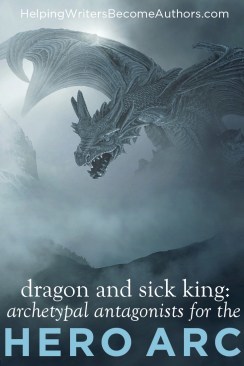 The well-known Hero Arc offers us the exciting story of a brave youth fighting to discover and earn his own worthiness. It follows on the heels of the Maiden Arc‘s initial individuation from the Authority Figures that dominate one’s youth, and it offers the young adult the opportunity to discover what he is meant to do with his life.
The well-known Hero Arc offers us the exciting story of a brave youth fighting to discover and earn his own worthiness. It follows on the heels of the Maiden Arc‘s initial individuation from the Authority Figures that dominate one’s youth, and it offers the young adult the opportunity to discover what he is meant to do with his life.
Viewed mythically, the Hero Arc (or Journey) is usually an epic Quest, in which the Hero ventures away from the Kingdom to confront a Dragon and find the Elixir that will heal the Sick King and save the Kingdom. More realistically, it is a story about finding meaning and setting one’s course in the very specific ways that will influence the entire rest of one’s life.
As we’ve already explored in our initial post about the Hero Arc, it is a story about exploring one’s newly burgeoning Power as an adult—and discovering whether or not that Power will be surrendered into a greater Love (which could be for a specific person or cause, but generally is seen to represent a loving reintegration with society itself).
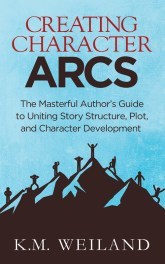
Creating Character Arcs (Amazon affiliate link)
As such, the Hero Arc is certainly a story with a deep inner conflict and character arc for the protagonist. The antagonists the character faces in the external plot may demand all sorts of heroic action. But fundamentally, as always, they represent key aspects of the Hero himself.
The two-sided face of the Hero’s archetypal antagonist can be seen to be represented by the Dragon and the Sick King. As always, one or the other can be more prevalent in the outer conflict, depending on the nature and focus of the specific story. Either way, both are important symbolic forces within this exciting story.
The Hero’s Antagonists: Practical and Thematic
Writing Your Story’s Theme (Amazon affiliate link)
Although the distinction may not always be cut and dried, we can recognize that a “practical” antagonist is one that faces the Hero in the external plot, while a “thematic” antagonist is one that represents the character’s inner struggle. Often, there is much crossover within the actual portrayal within a story (since, of course, we want plot and theme to be as unified as possible), but when viewed symbolically through the terms Dragon and Sick King, we can get a better glimpse of the true essence and purpose of these driving forces in a Hero’s story.
Dragon as an Archetypal AntagonistThe symbolism of the Hero slaying the Dragon is one of the oldest in human memory. We recognize this representation of the Dragon as that of a “monster”—a relatively undifferentiated “evil” but one that is animalistic rather than abstract. (In light of the fact that this “evil” grows more and more abstract as the life arcs progress, it is perhaps interesting to consider that the Dragon appears as such a practical foe in the Hero Arc in part because youthful protagonists tend to view good and evil in very simple and practical terms—as another living entity that simply needs to be vanquished.)
Other than being powerful, ravenous, and indiscriminately murderous, Dragons are generally portrayed as greedy hoarders. By the time the Call to Adventure reaches the unlikely Hero, it is clear the Dragon’s threat to the Kingdom is less about whatever damage he is wreaking through his fire-breathing and more specifically through something crucial that he has stolen and/or hoarded.
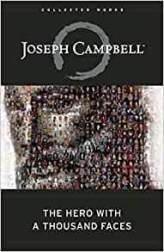
The Hero With a Thousand Faces Joseph Campbell (affiliate link)
This special MagGuffin—famously referred to by Joseph Campbell as the “Elixir”—could be a magical object or it could be a person, such as the Princess whom the Hero is so often charged with saving. Whatever it is, it is more than just a “thing.” It is symbolic of the Kingdom’s well-being. Without this thing or person, the Kingdom will suffer and decay.
And so the Dragon represents a force in the Hero’s world that is blocking health and growth. Crucially, the Dragon is blocking not just the Hero but others as well. The Hero Arc is founded upon the Hero learning to care for and protect others—in essence to become a stand-up member of society. As such, it is important that even in a relatively mundane story, the threat will be to more than just himself, even if it should seem that narrow in the beginning. Indeed, by the end, the Hero will at least become willing to sacrifice his own well-being for the good of all.
Depending on the scope of your story, the Dragon may indeed be a Dragon or some other mythic foe. But his essence can also be represented in other character archetypes, ranging from a Sorcerer on down to those characters who are more properly the Hero’s “equal” such as the Bully.
What is important is that the Dragon represents a threat to the Hero’s safe little Village world. It is a threat that initially seems far beyond his capability to deal with. But it is in the rising up that he reaches his heroic potential and grows into the caring responsibility and leadership of a mature adult.
The Sick King as Archetypal AntagonistAlmost as ancient although perhaps less well-known than the Dragon is the Sick King. Very often in the old tales, the Hero Arc is precipitated by the illness of the realm’s King. The magical object held by the Dragon is symbolically the healing “Elixir” needed to cure the King.
It is understood that the Sick King is representative of a sick Kingdom—that, indeed, the Kingdom’s current woes are because of the King’s sickness. And although this sickness may be a literal physical malady, it too is symbolic—of a failure of leadership or even egregious corruption on the King’s part. He is no longer a true and healthy King, as we see in the King Arc, but more properly Puppet/Tyrant, or even Hermit/Witch or Miser/Sorcerer.
The Sick King represents a failure in the cycle of the life arcs. Growth has stagnated, and it falls upon the youthful life-force energy of a newly appointed Hero to try to set right the balance (with perhaps some help from a canny Elder or Mentor). It is the Hero’s purity and potential that allow him the opportunity to restore youth and vitality to the King and the Kingdom.
Although not healed as part of a Hero Arc, an excellent example of the Sick King can be found in The Two Towers, in which Theoden, king of Rohan, has lost all strength, vitality, and even reason due to the corrupting whispers of Wormtongue in his ear. The Kingdom suffers direly, on the brink of falling to the great Evil of Sauron, even as Theodon’s son and heir dies and his beloved niece and nephew are degraded before him.
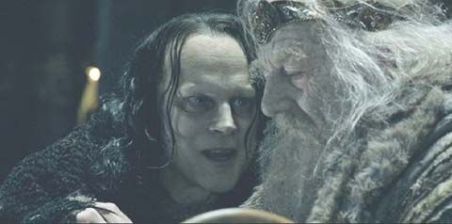
In the face grotesque of this corruption of responsible and loving leadership, the only hope is that either a rising Queen shall dethrone him or a Hero shall redeem him.
In some stories, the Sick King may only be a background motivation for the Hero’s Quest against the Dragon. The archetype of the Sick King may be mostly present within the story simply as evidenced in the sickness of the Kingdom through which the Hero travels. But the Sick King may also be a more direct antagonist.
If the Sick King’s “illness” is less debilitating than corrupting, he may be represented as a powerful figure who is directly blighting the Kingdom, either personally or vicariously through a weaponized Dragon (symbolic or otherwise). We can see this in the evil Fairy King character of the “Gentleman With the Thistledown Hair” in Susanna Clarke’s Jonathan Strange & Mr Norrell.

It’s also possible, and more mythically accurate, that the Sick King and the Dragon should both be actively destructive elements within the story—but ones who also directly oppose each other. In this case, the Hero must defeat them both in order to redeem the Kingdom.
How the Dragon and the Sick King Operate in the Conflict and the Climactic MomentThe Hero Arc, like all the masculine arcs, lends itself most obviously to plot-driven stories in which the primary antagonists are those faced in the external conflict. It is indeed possible that the conflict should be entirely focused on external antagonists (which can still be deeply symbolic in their own right). But because this is specifically a Hero Arc, the changes should be influencing the protagonist’s personal growth as well.
Both the Dragon and the Sick King will be active in the external plot. Often, the Sick King will be a presence lurking behind the Hero, pursuing him on his Quest, while the Dragon is a presence ahead of the Hero, creating obstacles. This can present a wonderfully layered set of conflicts, as well as many opportunities for raising the stakes.
But it is to be recognized that the Dragon and the Sick King are also both internal forces with which the Hero starts out unwittingly identifying. Just as Luke Skywalker in The Empire Strikes Back cut down his vision of the “Sick King” Darth Vader, only to find his own face staring out of the broken mask, the Sick King represents the decay of the heroic principle.
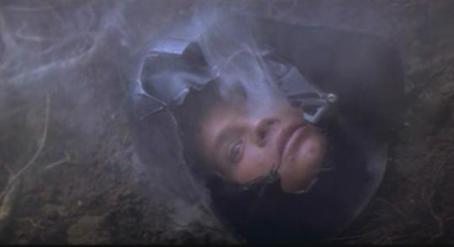
The Hero’s central struggle is between Power and Love—control and surrender—and so his relationship to the Sick King can be used to represent his own natural affinity and temptation toward corrupted Power. (This struggle, of course, can end with a powerful declaration such as Luke’s to Emperor Palpatine in Return of the Jedi when he later refuses to kill Vader, whom he now knows to be his own father: “I’ll never turn to the Dark Side. You’ve failed, Your Highness. I am a Jedi, like my father before me.”)
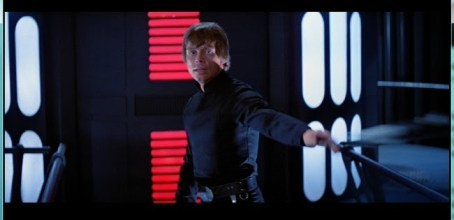

Romancing the Shadow by Connie Zweig and Steve Wolf (affiliate link)
The same holds true in regard to the Dragon. Symbolically, it is understood that the ancient Dragon was often simply another guise of the Princess that the Hero was trying to recognize. As such, the Dragon is in fact representative of the corrupted capacity for Love in the Hero himself. His journey is that of overcoming his own selfishness and desire for power and control, so that he may love fully and compassionately. Only once he has slain his own inner Dragon is he worthy to Love and save the Princess (and thereby heal the Kingdom). In their book Romancing the Shadow, Connie Zweig and Steve Wolf note:
In these countless tales, a young male full of bravado makes a perilous journey, which typically includes a descent to darkness, slays a terrible shadow-monster, winning a damsel as his prize. Interpreted psychologically, the hero slays the monster-Other within; the ego vanquishes the shadow but does not stop to recognize it as a dark brother, so the deeper initiation does not take place.
These deeper initiations will wait until later arcs.
In most Hero-Arc stories, the Dragon will be the final climactic antagonist the Hero faces. From there, he will return with the Elixir to heal the Sick King in the Resolution. But these trappings are, of course, deeply symbolic and can be maneuvered into many different practical aspects in different types of stories.
Foundationally, the Hero Arc is a wonderfully simple story about the struggle between Love and Power. As such, the conflict between protagonist and antagonist is usually relatively simple as well. Stereotypically, we see it in the old trope about how all the Hero has to do is “kill the bad guy, save the girl, and ride off into the sunset.” There’s a deep resonance and beauty to this, but it’s important to recognize and remember that this simplistic view of good and evil (and life itself) is still a relatively youthful perspective. It is one that belongs specifically to the Hero stage of life, but one that should hopefully be moved past as the character continues to evolve into the capacity to see life’s conflict in broader terms and to adapt accordingly in later arcs.
Stay Tuned: Next week, we will discuss the Queen’s archetypal antagonists: Invader and Empty Throne.
Related Posts:
Story Theory and the Quest for MeaningAn Introduction to Archetypal StoriesArchetypal Character Arcs: A New SeriesThe Maiden ArcThe Hero ArcThe Queen ArcThe King ArcThe Crone ArcThe Mage ArcIntroduction to the 12 Negative ArchetypesThe Maiden’s Shadow ArchetypesThe Hero’s Shadow ArchetypesThe Queen’s Shadow ArchetypesThe King’s Shadow ArchetypesThe Crone’s Shadow ArchetypesThe Mage’s Shadow ArchetypesIntroduction the 6 Flat ArchetypesThe ChildThe LoverThe ParentThe RulerThe ElderThe MentorHow to Use Archetypal Character Arcs in Your StoriesSummary of the Archetypal Character ArcsArchetypal Antagonists for Each of the Six Archetypal Character ArcsMaiden Arc: Authority and PredatorWordplayers, tell me your opinions! Can you think of any further examples of the Dragon and Sick King in fiction? Tell me in the comments!Click the “Play” button to Listen to Audio Version (or subscribe to the Helping Writers Become Authors podcast in Apple Podcast or Amazon Music).
___
Love Helping Writers Become Authors? You can now become a patron. (Huge thanks to those of you who are already part of my Patreon family!)The post Archetypal Antagonists for the Hero Arc: Dragon and Sick King appeared first on Helping Writers Become Authors.
September 10, 2021
Writing Your Story’s Theme Audio Book (+ Special Announcement)
I’m happy to announce the Writing Your Story’s Theme audio book is now available, narrated once again by my regular collaborator Sonja Field.
Thanks for your patience in waiting for the audio version. I know I’ve been promising it ever since the paperback and e-book versions of the book came out last year. We ran into a few delays, but it’s finally here!
You can grab it off Amazon , and if you’re not an Audible member yet you can even grab it for free by signing up!
About the Audio BookTheme Is What Your Story Is Really About
Theme—the mysterious cousin of plot and character. Too often viewed as abstract rather than actionable, theme is frequently misunderstood and left to chance. Some writers even insist theme should not be purposefully implemented. This is unfortunate, because in many ways theme is story. Theme is the heart, the meaning, the point. Nothing that important should be overlooked.
Powerful themes are never incidental. They emerge from the conjunction of strong plots and resonant character arcs. This means you can learn to plan and implement theme. In doing so, you will deepen your ability to write not only stories that entertain, but also stories that stay with readers long after the end.
Writing Your Story’s Theme will teach you:
How to create theme from plot and character.Why every supporting character and subplot should enhance the theme.How to prevent theme from seeming preachy or “on the nose.”What to consider in identifying the best theme for any given story.And much more!Conscious mastery of theme will elevate every story you write and allow you to craft fiction of depth and meaning.
Take Control of Your Story Via a Powerful Implementation of Theme
Get the Book:And…. a Special Announcement: A Full-Cast Audio Production of Wayfarer Is Coming Soon!In other news, I’m super excited to announce that a really special audio production is also in the works: a full-cast production of my gaslamp fantasy Wayfarer. In partnership with Sargent Family Productions and complete with music and sound effects, this is probably the closest I’ll ever get to having one of my novels turned into a movie—and I am totally pysched! You can listen to a short trailer below and pre-order here. The audio production will be released December 7th, so stayed tuned!
https://www.generationsthestory.com/wp-content/uploads/2021/05/WF_Trailer_A_Smaller.mp3

The post Writing Your Story’s Theme Audio Book (+ Special Announcement) appeared first on Helping Writers Become Authors.



